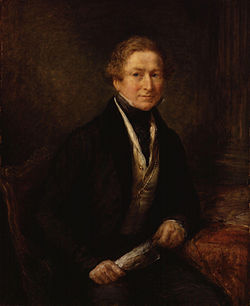| Office | Name | Term |
|---|
First Lord of the Treasury
Leader of the House of Commons | Sir Robert Peel | September 1841 – July 1846 |
| Lord Chancellor | John Copley, 1st Baron Lyndhurst | September 1841 – July 1846 |
| Lord President of the Council | James Stuart-Wortley-Mackenzie, 1st Baron Wharncliffe | September 1841 – December 1845 |
| | Walter Montagu-Douglas-Scott, 5th Duke of Buccleuch | December 1845 – July 1846 |
| Lord Privy Seal | Richard Temple-Nugent-Brydges-Chandos-Grenville, 2nd Duke of Buckingham and Chandos | September 1841 – February 1842 |
| | Walter Montagu-Douglas-Scott, 5th Duke of Buccleuch | February 1842 – January 1846 |
| | Thomas Hamilton, 9th Earl of Haddington | January–July 1846 |
| Home Secretary | Sir James Graham, 2nd Baronet | September 1841 – July 1846 |
| Foreign Secretary | George Hamilton-Gordon, 4th Earl of Aberdeen | September 1841 – July 1846 |
| Secretary of State for War and the Colonies | Edward Smith-Stanley, Baron Stanley | September 1841 – December 1845 |
| | William Gladstone | December 1845 – July 1846 |
| First Lord of the Admiralty | Thomas Hamilton, 9th Earl of Haddington | September 1841 – January 1846 |
| | Edward Law, 1st Earl of Ellenborough | January–July 1846 |
| Chancellor of the Exchequer | Henry Goulburn | September 1841 – July 1846 |
| President of the Board of Control | Edward Law, 2nd Baron Ellenborough | September–October 1841 |
| | William Vesey-FitzGerald, 2nd Baron FitzGerald and Vesey | October 1841 – May 1843 |
| | Frederick Robinson, 1st Earl of Ripon | May 1843 – July 1846 |
| President of the Board of Trade | Frederick Robinson, 1st Earl of Ripon | September 1841 – May 1843 |
| | William Gladstone | May 1843 – January 1845 |
| First Commissioner of Woods and Forests | Henry Pelham-Clinton, Earl of Lincoln | February 1845 – January 1846 |
| Chancellor of the Duchy of Lancaster | Lord Granville Somerset | May 1844 – July 1846 |
| Secretary at War | Sir Henry Hardinge | September 1841 – January 1845 |
| | Sidney Herbert | January 1845 – July 1846 |
| Paymaster General | Sir Edward Knatchbull, 9th Baronet | September 1841 – January 1845 |
| Chief Secretary for Ireland | Henry Pelham-Clinton, Earl of Lincoln | January–July 1846 |
Minister without Portfolio
Leader of the House of Lords | Arthur Wellesley, 1st Duke of Wellington | September 1841 – July 1846 |



